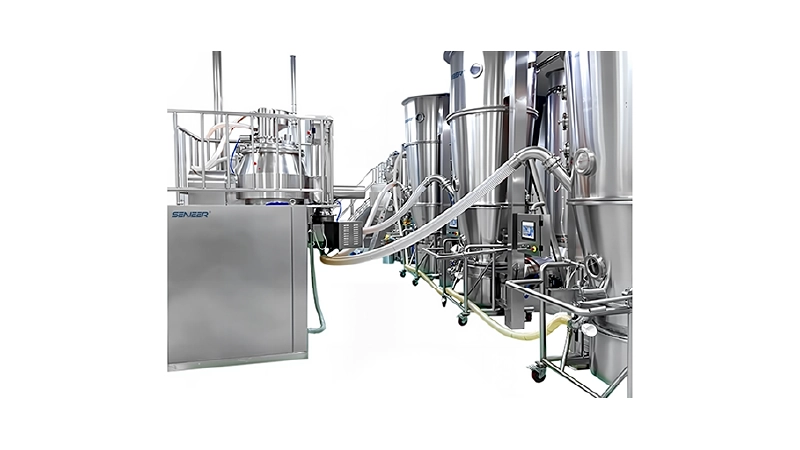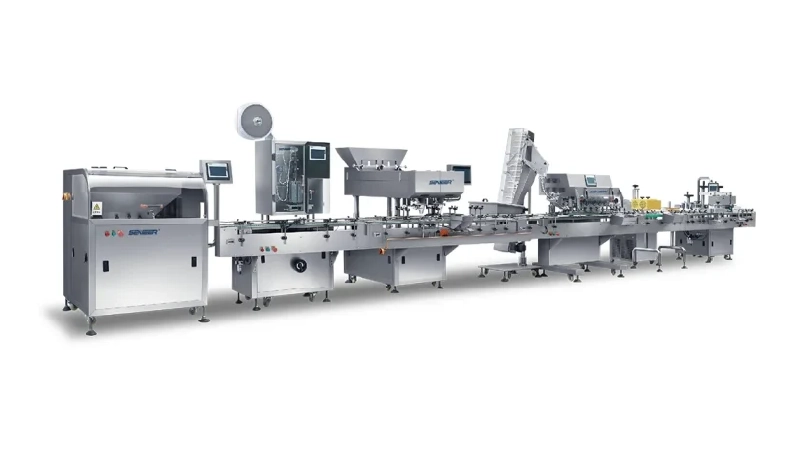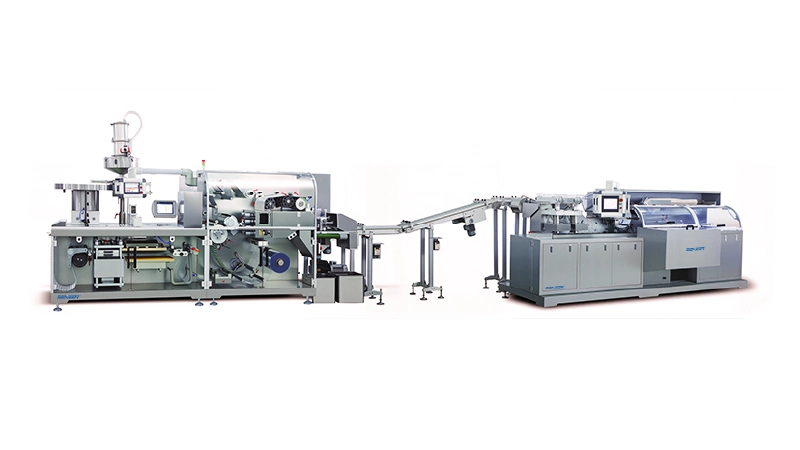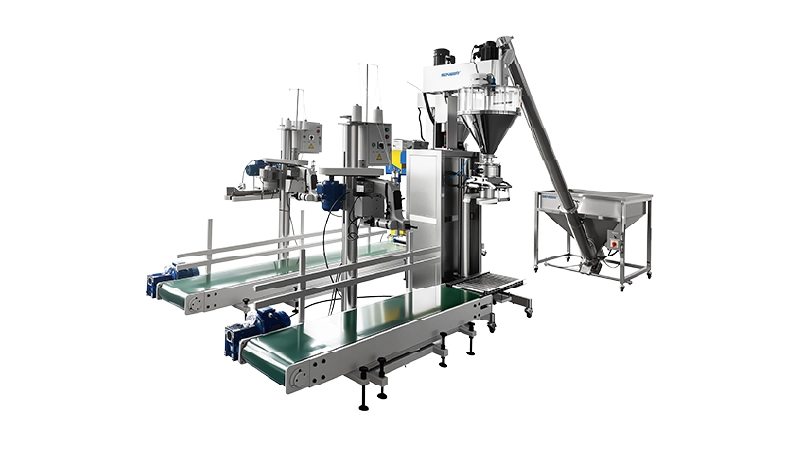In order to shorten the dispersion time of aceclofenac dispersible tablets, the preparation process of aceclofenac dispersible tablets was technically improved in this paper, and the new process was verified——based on the properties, moisture, and content of aceclofenac granules, the dispersion The properties, identification, and related substances of the tablets were used as the investigation indicators, and the original preparation process and the new preparation process were compared and studied. The experimental results prove that the parameters of the dispersible tablets prepared by the new process all meet the standard requirements, and the process has good reproducibility, the product is uniformly dispersed, and the active ingredients dissolve quickly, which provides an effective basis for the production of aceclofenac dispersible tablets. reference basis.
Dispersible tablets refer to tablets that can disintegrate rapidly in water and disperse evenly. Dispersible tablets have the characteristics of convenient administration, rapid disintegration, rapid absorption, and high bioavailability. Compared with ordinary tablets or capsules, dispersible tablets can shorten the peak time of oral administration and increase the peak concentration, which has clinical therapeutic advantages. Moreover, it is convenient for special patients such as the elderly and infirm, those with swallowing dysfunction, infants and young children, and is a very popular dosage form. The common dosage forms of aceclofenac are ordinary tablets and hard capsules, which are suitable for the treatment of pain and inflammation caused by osteoarthritis, rheumatoid arthritis and ankylosing spondylitis. In order to make full use of the advantages of dispersible tablets, quickly alleviate the pain of patients, and enhance the powerful antipyretic and analgesic effects of aceclofenac, now the poorly soluble aceclofenac is made into dispersible tablets. The preparation process was studied to provide the necessary reference for the production of aceclofenac dispersible tablets.
Part 1 Experimental Materials
1.1 Equipment And Instruments
WF-30B universal pulverizer, CH-200 trough mixer, YK160 swing granulator, FL-200 boiling granulation dryer, SBH-800 three-dimensional swing mixer, ZP37 rotary tablet press, JC-TP analytical balance , BJ-2 disintegration tester, LC20AT high performance liquid chromatography, SDR1911 UV-visible spectrophotometer.
1.2 Materials
Materials such as aceclofenac, sodium carboxymethyl starch, microcrystalline cellulose, low-substituted hydroxypropyl cellulose, crospovidone, sodium lauryl sulfate, and aspartame all meet the quality standards after inspection.
1.3 Test Reagents
Ethanol, 0.6% potassium ferricyanide, 0.9% ferric chloride, 1% hydrochloric acid, phosphoric acid, sodium acetate, glacial acetic acid, diclofenac sodium, potassium dihydrogen phosphate, sodium hydroxide, acetonitrile.
Part 2 Preparation Process Comparison
2.1 Original Preparation Process
The specification of aceclofenac dispersible tablet is 0.1 g, about 40% of raw material aceclofenac.
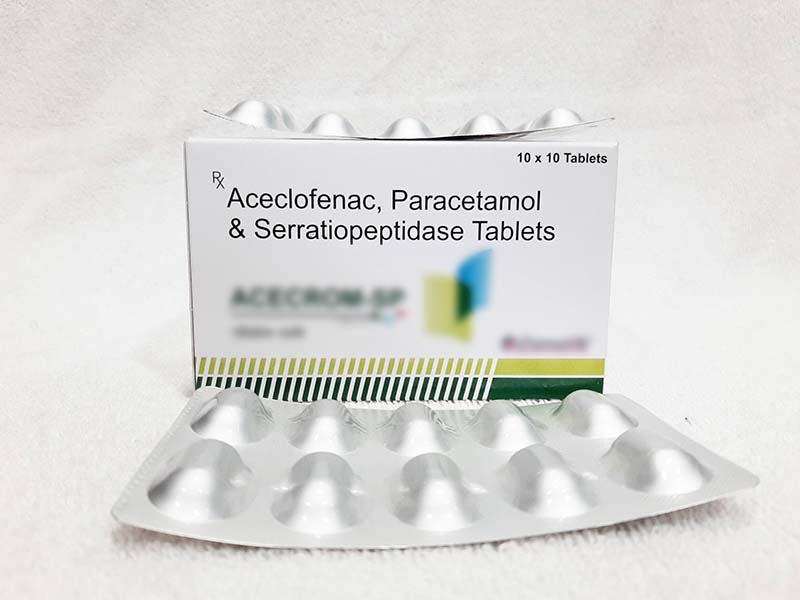
Excipients: 30% sodium carboxymethyl starch, 15% microcrystalline cellulose, 10% low-substituted hydroxypropyl cellulose, according to the preparation Process: Grind the raw material aceclofenac into 100 meshes, and mix the fine powder with the auxiliary materials sodium carboxymethyl starch (25% added), microcrystalline cellulose, low-substituted hydroxypropyl cellulose, etc. in a mixer for 10 min→add in moistening Wet agent (appropriate amount of purified water)→mixing for 3 min→shaking granulation (16 mesh)→drying (temperature 70±5°C, time about 2.5 h)→shaking granulation (16 mesh)→total mixing 20 min (add carboxymethyl Sodium starch starch 5%, magnesium stearate 2%)→tabletting (the punch is Φ9 mm shallow concave, the speed is controlled at 25-30 r/min), and the tablet is obtained.
2.2 New Preparation Process
The specification of aceclofenac dispersible tablet is 0.1 g, about 40% of raw material aceclofenac.
Excipients: 20% sodium carboxymethyl starch, 15% microcrystalline cellulose, 10% low-substituted hydroxypropyl cellulose, cross-linked Povidone 10%, sodium lauryl sulfate 0.2% , sweetener and flavoring agent aspartame, according to the preparation process: the raw material aceclofenac was crushed into 100 meshes, finely Powder and auxiliary materials sodium carboxymethyl starch (15%), microcrystalline cellulose, low-substituted hydroxypropyl cellulose, crospovidone, sodium lauryl sulfate, etc. were mixed in a mixer for 10 min→add pro- Water-based binder (an appropriate amount of 3% low-substituted hydroxypropyl cellulose aqueous solution)→mixing for 3 min→swing granulation (16 mesh)→drying (temperature 65±5℃, time about 3 h)→swing granulation (16 mesh) → total mixing for 20 min (adding 5% sodium carboxymethyl starch, 2% micropowder silica gel, and 2% magnesium stearate) → tableting (punch Φ9 mm shallow concave, speed controlled at 25 r/min), carry out Tablet that is.
2.3 Particle Inspection Comparison
According to the original preparation process and the new preparation process of aceclofenac dispersible tablets, experiments were carried out for 3 times, and the particle properties, particle moisture and particle content were checked.
(1) Eligibility Criteria
Granule Traits: It should be white or off-white granules.
Particle Moisture: ≤2.5%.
Particle Content: The aceclofenac (C16H13Cl2NO4) contained in this product should be 39.5% to 42.5% of the labeled amount.
(2) Particle Comparison Conclusion
After comparison, it is concluded that the new preparation process adds high-quality disintegrant crospovidone and surfactant sodium lauryl sulfate from the formulation design, and uses hydrophilic adhesives to replace the wetting agent purification of the original preparation process Water granulation makes granulation easier and more convenient to operate. The properties, moisture, content and other inspections of the granules of the original preparation process and the new preparation process all meet the quality standard requirements. The reproducibility of the inspection data is good, and the inspection results meet the regulations.
2.4 Comparison Of Dispersible Tablet Inspection
According to the original preparation process and the new preparation process of aceclofenac dispersible tablets, experiments were carried out for 3 times to check the properties, related substances, dissolution rate, dispersion uniformity and content determination of the dispersible tablets.
(1) Eligibility Criteria
Properties: It should be white or off-white tablets.
Related Substances: in the chromatogram of the test solution, if there is a chromatographic peak consistent with the retention time of aceclofenac, it shall not exceed 0.4% of the labeled amount of aceclofenac according to the peak area calculation by the external standard method, and other individual impurities (except for aspartame excipient peak) the peak area shall not be greater than the peak area of aceclofenac in the control solution (0.2%), and the sum of the peak areas of other impurities shall not be greater than 5% of the peak area of aceclofenac in the control solution times (1.0%).
Dissolution: The limit is not less than 80% of the labeled amount.
Uniformity of dispersion: within 3 min, it should completely disintegrate and pass through a 710 µm sieve.
Content Determination: The aceclofenac (C16H13Cl2NO4) contained in this product should be 95.0% to 105.0% of the labeled amount.
(2) Comparison Conclusion Of Dispersible Tablets
Through comparison, it can be concluded that the new preparation process adds glidant micro-powder silica gel and lubricant magnesium stearate from the formulation design, and the fluidity of the particles is better, which is beneficial to the production of tablets. The dispersion time of the related substances aceclofenac, simple impurities and total impurities in the dispersible tablets of the new preparation process is better than that of the original preparation process. The properties, related substances, dissolution rate, dispersion uniformity, content and other inspections of the new process dispersible tablets all meet the requirements of the quality standards, the reproducibility of the inspection data is good, and the inspection results meet the regulations.
Part 3 Results And Discussion
The new preparation process adds high-quality disintegrating agent crospovidone, surfactant sodium lauryl sulfate, and adds glidant micropowder silica gel and lubricant magnesium stearate from the formulation design, and adopts hydrophilic adhesive The 3% low-substituted hydroxypropyl cellulose aqueous solution replaced the wetting agent purified water in the original preparation process. The new process accelerates the disintegration of the tablet and promotes the dissolution of the drug through the above measures. Moreover, the properties, moisture, and content of the semi-finished granules produced by the new process, and the related substances, dissolution rate, dispersion uniformity, and content of the dispersible tablets all meet the quality standards.
During the experiment, it was found that the preparation of dispersible tablets should be micronized according to the characteristics of raw materials (such as insoluble drugs). Due to the large amount of disintegrant prescriptions, moisture-proof should be paid attention to in the production process, and suitable moisture-proof packaging materials should be selected for product packaging .






